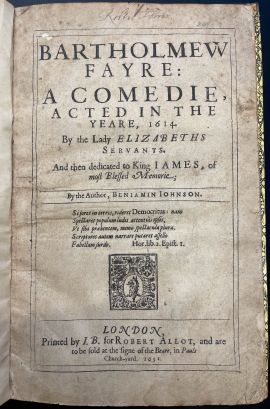Scrapbook - yide

Overview
The book I investigated is a scrapbook called Teikoku Renshū Kantai Shōwa 11-nen tobei shiryō in Japanese. In English, it means Empire Training Squadron Travel to the United States. The scrapbook is a collection of training manuals, brochures, maps, and postcards collected by a member of the Renshū Kantai on a trip to the United States and Central America in 1936. The earliest-published item in the collection is a Rand-McNally map published in 1923. These items are inserted into a commercially produced "scrapbook" of unidentified manufacture. Some items were inserted in pockets and others were pasted in. The materials are mostly in English and some in Japanese.
Cover and Binding
The scrapbook has a brown hardcover titled “Scrap Book” on the front and “帝國練習艦隊昭和十一年渡米資料” on the spine. The book is opened from the left and the reader would flip the page from right to left to read through the whole book. Inside the book, the pages are brown as well and relatively thin. They are bound together using an iron structure inside. (See Fig.1 below) It has some pages left blank while most of the pages have a collection pasted on top of it. Some of the postcards pasted using tape have fallen off and some of the brochures have some minor damages on them which probably happened before being pasted onto this scrapbook.
Content
Geography Variety
The book was made by collecting a wide range of materials from different parts of the US and some even from the South America region like Havana. The collections are very well sorted by geographic location in the book. Materials from different places like Los Angeles, New York, Washington DC, etc. are put together respectively. You will not see a postcard from New York near a map from Los Angeles. The author of this scrapbook has a mental map that helps to filter through the materials and group them together by geographic locations. I would imagine that the author has collected more than needed and all of them are randomly placed initially.
Material Variety
Besides the variety of locations, we also see different types of materials being collected. It includes commercial advertisements for cruise trips, tourist maps published by a private company, postcards with beautiful scenery or historical site, booklets with technical explanations of the San Francisco Oakland Bay Bridge, souvenirs from Havana, etc. The selection of materials aims to depict and capture the customs, traditions, and culture of the place. Each of those materials was selected into the book for a reason and the author is trying to show a holistic picture by collecting and selecting delicately.
Language Variety
The variety of languages also contributes to the production of this scrapbook. Since the author is Japanese, he also includes many different materials in Japanese. Although I don’t read Japanese very well, I realize a newspaper written in Japanese published in California that documented the population of Japanese people in South California. The detailed chart contains statistics for males vs. females and people in different age groups. Again, the author of the scrapbook includes this type of information intentionally and serves the purpose of depicting the culture of the city or state.
The production
The production of this book is well-planned by the author. Every page is occupied with materials and the layout on each page is well-designed. It’s aesthetically appealing to flip through the book where there is the interplay of picture and text. Postcards are grouped together by geographic location and only the most iconic places are selected for the scrapbook. The author must have collected more than what has been put into the book during traveling. It’s reasonable to infer that there is a selection process where only the best and most representative information will be shown to the reader. In Ellen Garvey’s book “Writing with scissors,” the author talks about the importance of the selection process in the making of a scrape book. Unlike traditional writing where the author uses text to compose, the author uses collected materials to deliver messages in scrapbooks. Besides, it’s an interesting observation that most of the cities visited are coastal cities. Thus, it’s reasonable to infer the author visited different places through naval traveling. Although the exact process of the production of this valuable scrapbook is unknown, we can make many educated guesses that reveal important information.